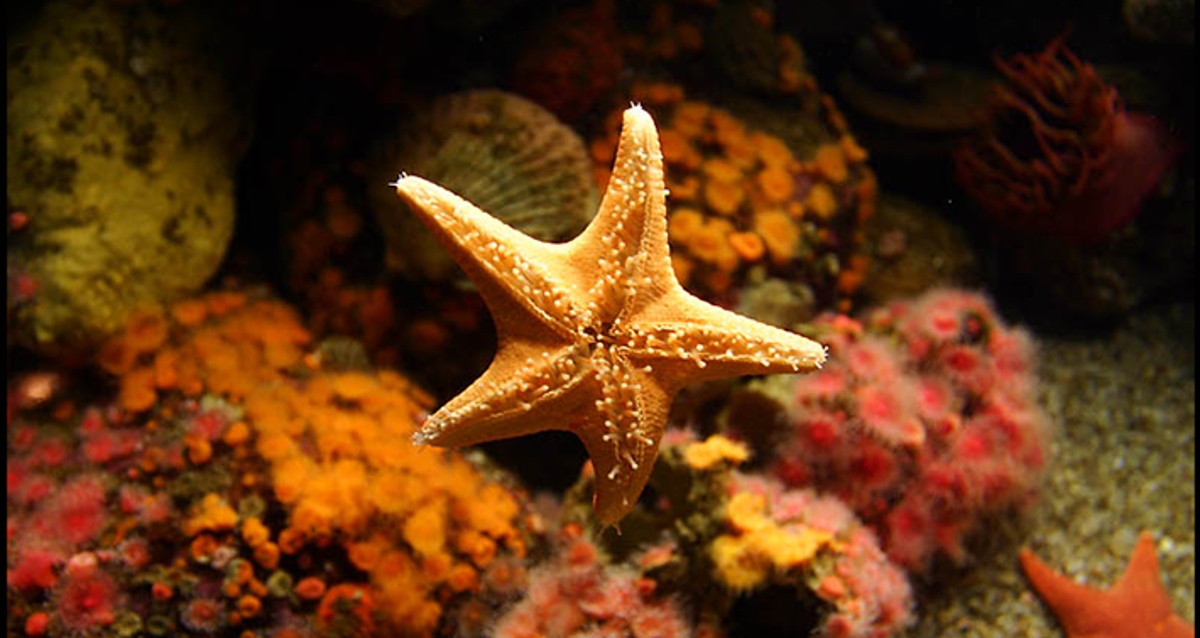Keeping Starfish in Aquariums: A Beginner's Guide
Starfish are beautiful creatures that many aquarium enthusiasts dream of having. They come in various shapes and vibrant colors, adding a lot of charm to any aquarium. However, starfish have strict environmental requirements, and if not properly cared for, they can face significant challenges in captivity. This guide will provide detailed instructions to help you successfully keep starfish in your aquarium.
1. Proper Water Quality
Starfish are highly sensitive to water quality. To keep them healthy, you must ensure stable water conditions. The water in the aquarium must be well-circulated and filtered, and the salinity, pH levels, and temperature must remain within suitable ranges.
- Salinity: Maintain between 1.023 and 1.025.
- pH Levels: Generally, starfish prefer a pH range of 8.1 to 8.4.
-
Temperature: Most starfish thrive at temperatures between 24-26°C (75-79°F).

2. Sufficient Space
Starfish need ample bottom space to move and forage. It's recommended to choose a larger tank to ensure the starfish have enough room to roam. Avoid placing them in overly small tanks, as this can restrict their movement and affect their health.
3. Dietary Needs
Different types of starfish have varied dietary habits. Most starfish feed on microorganisms, algae, and other small invertebrates. You can supplement their diet by adding algae wafers, shrimp meat, and other suitable foods for starfish in the tank.
4. Appropriate Water Flow
Starfish need proper water flow to help them breathe and find food. Ensure that the tank has adequate water circulation but not too strong, so as not to disrupt their normal activities. The water flow should be evenly distributed to avoid dead zones in the tank.
5. Avoid Predatory Tank Mates
Ensure there are no fish or other creatures in the tank that might prey on the starfish. Certain fish, like lobsters and some large sea anemones, can attack starfish, leading to injury or death. Therefore, pay special attention to the compatibility of tank inhabitants when selecting them.
6. Stable Temperature
Starfish are very sensitive to temperature fluctuations. Use a reliable heater and thermometer to ensure the tank temperature remains stable within the suitable range (24-26°C or 75-79°F). Avoid drastic temperature changes to prevent stress and health issues for the starfish.
7. Regular Water Quality Monitoring
Regularly monitor the water quality parameters in the tank, such as ammonia, nitrite, nitrate, salinity, and pH levels. Ensure these parameters remain within the acceptable range for starfish and make adjustments as necessary.
8. Professional Care
Starfish require regular observation and care. Monitor their activity, eating habits, and appearance. If you notice any abnormal conditions, such as inactivity, loss of appetite, or physical changes, take immediate action.
Conclusion
Although keeping starfish can be challenging, they will become a highlight in your aquarium with the right environment and careful attention. Remember, regular monitoring and maintenance of water quality, ensuring sufficient space, and providing an appropriate diet are key to successfully keeping starfish. If you can achieve these, your starfish will thrive in your tank, showcasing their unique beauty.












































































































